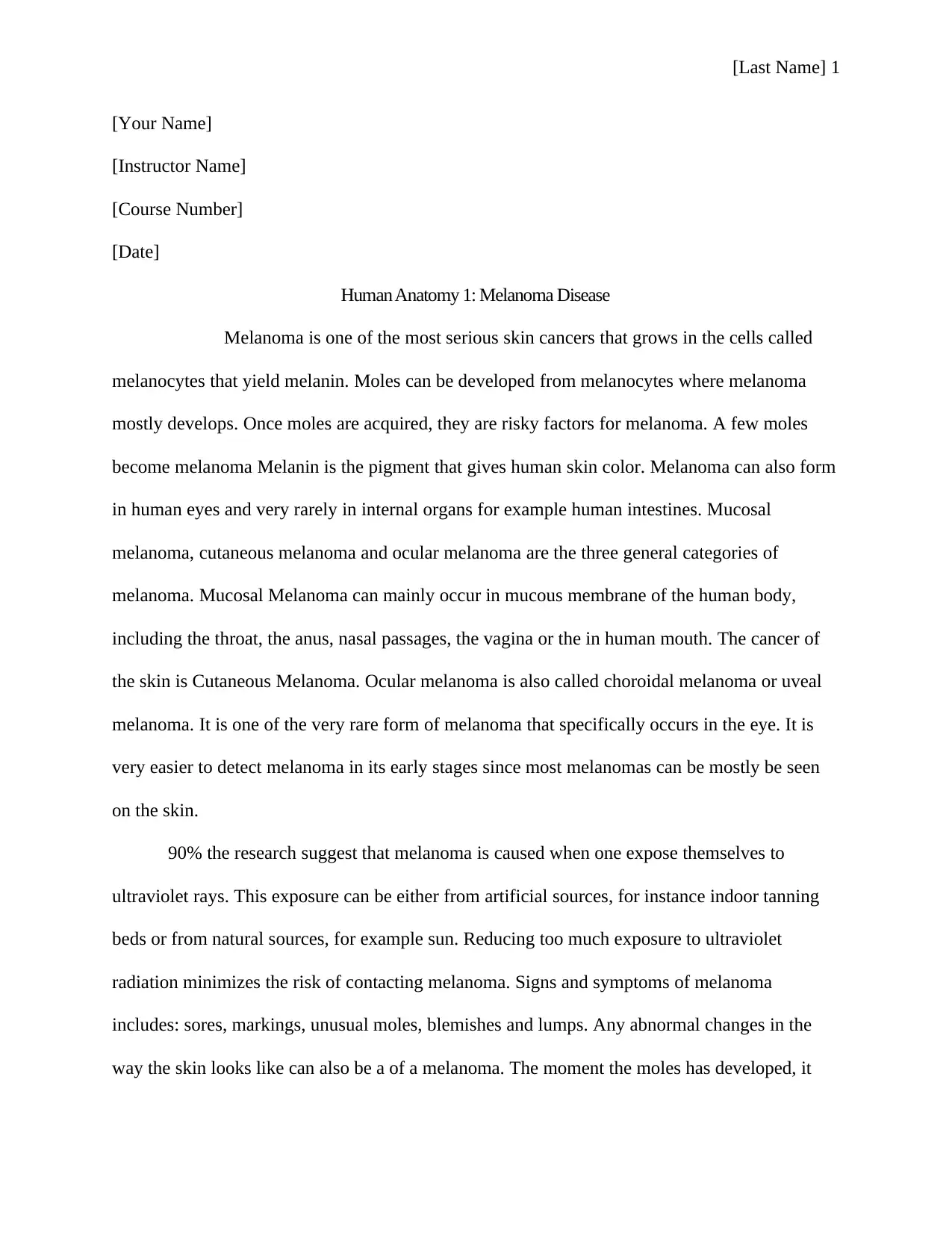Extra Credit Essay: Human Anatomy 1 - Melanoma Disease Analysis
VerifiedAdded on 2022/12/26
|3
|654
|52
Essay
AI Summary
This essay, written for a Human Anatomy 1 extra credit assignment, focuses on melanoma, a serious form of skin cancer. It explores the disease's origins in melanocytes and melanin, discussing different types like cutaneous, ocular, and mucosal melanoma. The essay details the causes, primarily exposure to ultraviolet radiation, and outlines the signs and symptoms, including the ABCDE rule for identifying melanoma. The document includes references to support the information presented, offering a comprehensive overview of the disease. The essay is formatted according to the assignment guidelines, including specific font, spacing, and page length requirements.
1 out of 3




![[object Object]](/_next/static/media/star-bottom.7253800d.svg)